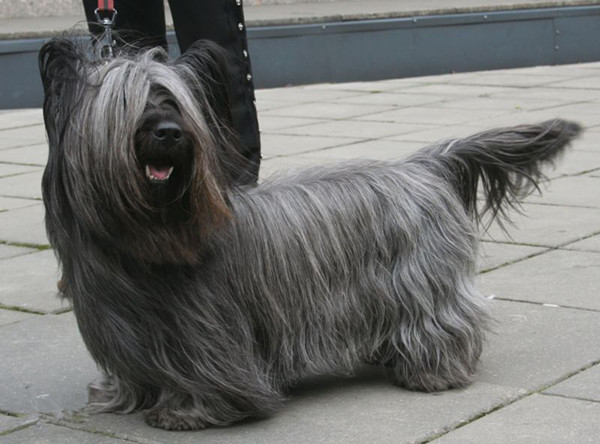Skye Terrier
IUCN
LCBasic Information
Scientific classification
- name:Skye Terrier
- Scientific Name:Welsh Terrier
- Outline:Carnivora
- Family:Canidae
Vital signs
- length:23-25cm
- Weight:8.5-10.5kg
- lifetime:12-15year
Feature
The Skye Terrier was bred on the isolated Scottish island of Skye, where the islanders specialized in hunting otters, badgers and foxes. Its keen sense of smell and agile, strong and muscular body enable it to find them and dig their burrows to capture them.
Distribution and Habitat
Native to the Isle of Skye, Scotland
Appearance
Very short, about twice as long as tall. Long, low and level body, densely covered with long, straight hair that hangs down the sides and covers the oval ribs. The head is well feathered, covering the muzzle and eyes, to protect it from chasing other animals through the brush.
The head is long and powerful. The eyes are brown, preferably dark brown, of medium size, set close together, and full of energy and intelligence. The ears are neat and symmetrical, with elegant feathering. They may be erect or drooping. If erect, they are of medium size, set high on the outer edge of the head, with the tips of the ears wider apart and farther apart than the base of the ears. The drooping ears are slightly larger, set lower, and hang flat on the head. The back of the skull is of medium width, tapering to the muzzle, which is strong. The muzzle is dark and of medium fullness. Powerful and absolutely sound jaws. The nose must be black.
The coat is double, with the undercoat being short, dense
Details
The Skye Terrier originated in the 17th century and was bred on the isolated Scottish island of Skye. The islanders used the breed specifically to hunt otters, badgers and foxes. Its keen sense of smell and agile, strong, muscular body enable it to find them and dig their burrows to capture them. The Skye Terrier's short and strong legs are well suited for digging, and its double fur protects it from opponents and bad weather.

The breed takes its name from the chief of the Northwest Isles of Scotland. Here the Skye Terrier established its first home and is considered to be the most perfect. It is the only terrier that originated in the Northwest Isles, which are different from the whole of Scotland, and is unique. Those who have a good practical knowledge of the Skye Terrier still believe that the Skye Terrier has no rivals in its own unique field. Whether in rocks, dens, caves, heaps of stone or in the bush where birds and beasts hide, or in the waters where it hunts wild animals, the Skye Terrier's contribution will be remembered.
In the past, the Skye Terrier was well known in the cities of England, especially in the royal court. Kings and queens of England often set English fashions, and the Skye Terrier was accepted in the royal court - this was evident in the mid-16th century when Jayce wrote his history, and it soon became a fashionable pet for all classes of nobility, and in the following years, ordinary people also owned it.
Going back to the late 1910s, the Skye Terrier was the most popular of all terriers. Queen Victoria's early interest and Edwin Lancel's drawings of the new Skye Terrier help to illustrate this. After being bred in all English-speaking countries, the Skye Terrier gradually lost its appeal, but in England and Scotland, where it remains the largest base, its admirers often speak with pleasure of the time when a Duchess would be very shy when seen in the park without her long-haired Skye Terrier.
The Skye Terrier was first registered with the AKC in 1887. It was one of the most important breeds in American dog shows before the 20th century. Competitions between kennel clubs were extremely fierce, and although the Skye Terrier's field of activity was somewhat reduced, the Skye Terrier still had a strong appeal to those who came into contact with it, which proved the Skye Terrier's true value.
The Skye Terrier is a typical working terrier, who likes to chase games and go out, and is energetic, brave, powerful and agile. Knowing no fear, good-tempered, loyal and intelligent, he appears friendly and cheerful with familiar people, but reserved and wary of strangers.
Protect wild animals and eliminate game.
Maintaining ecological balance is everyone's responsibility!








